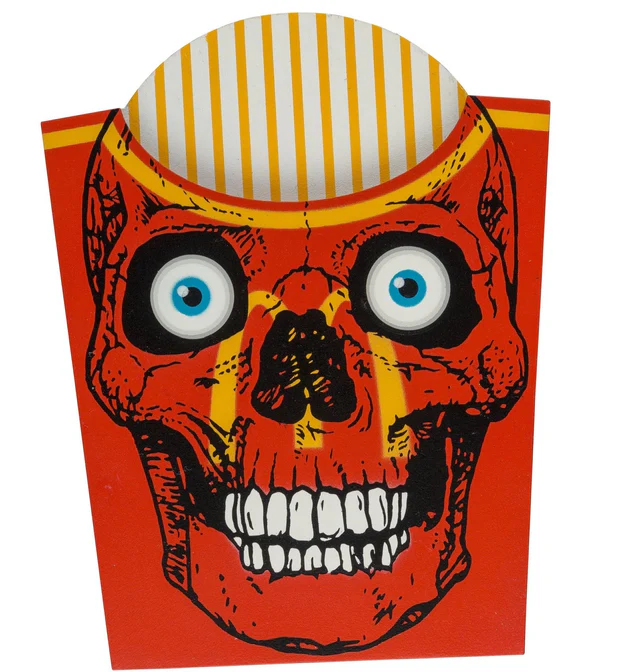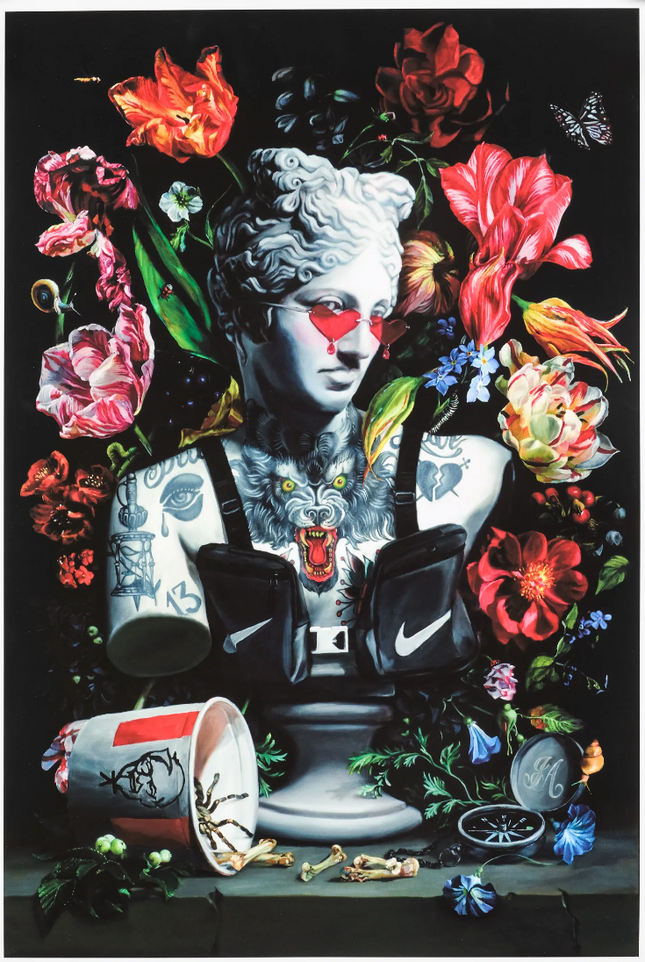
Food & Eating

Kathy Ager The Heart Is A Lonely Hunter Giclee Print by Kathy Ager
The Heart Is A Lonely Hunter Giclee Print by Kathy Ager Artwork Limited Edition Print on 290gsm Cotton Fine Art Paper Graffiti Pop Street Artist. 2022 Signed & Numbered Limited Edition of 50 Artwork Size 18x26 The Visual Language of "I Hope Your Flowers Bloom" by Kathy Ager Kathy Ager's "I Hope Your Flowers Bloom" is a captivating giclée print that channels the essence of Street Pop Art and graffiti Artwork through a lush tableau of flora intertwined with a pristine pair of sneakers. As a limited edition release, the artist signed and numbered this artwork, further securing its status as a collectible. With only 200 prints, it measures 18x24 inches and is presented on 290gsm rag watercolor fine art paper, which enriches the print's visual texture and color depth. This piece stands out in Ager's oeuvre as a symbolic work that blends the urban with the natural, the every day with the extraordinary. The hyperrealistic depiction of the sneakers—a staple of street fashion and urban identity—is enveloped by an explosion of floral elements, echoing the organic growth patterns found in nature. This juxtaposition is a metaphor for the bloom of ideas and creativity that Street Pop Art and graffiti Artwork represent in the concrete jungles of city landscapes. Materials and Techniques: The Artistry Behind the Print The medium of giclée printing is chosen for its ability to reproduce the vibrant hues and intricate details of the original artwork with exceptional clarity. Using 290gsm rag watercolor paper provides a fine art texture more commonly associated with traditional painting techniques, thus elevating the piece from a mere reproduction to an artwork in its own right. This strategic choice of materials underscores the high value placed on quality within Kathy Ager's art practice, ensuring that each edition of "I Hope Your Flowers Bloom" resonates with her vision's authenticity and aesthetic appeal. Symbolism and Cultural Relevance in Kathy Ager's Artwork The imagery of "I Hope Your Flowers Bloom" delves deep into the cultural significance of its subjects. Sneakers have long been a symbol of contemporary culture, often associated with youth, vitality, and the street culture from which graffiti arises. The presence of these shoes amidst a traditionally beautiful setting of flowers and wildlife suggests a harmony between human-made and natural beauty, between urban life and the growth it can foster. This work emulates the transformative power of Street Pop Art and graffiti Artwork, which often takes ordinary urban elements and recontextualizes them in ways that challenge our perceptions of beauty and art. Impact and Reception of "I Hope Your Flowers Bloom" Since its release in 2021, "I Hope Your Flowers Bloom" has garnered attention for its bold thematic approach and technical prowess. It has been embraced by art collectors and enthusiasts who appreciate the innovative fusion of street culture with acceptable art principles. The limited edition nature of the print has not only made it a sought-after piece for private collections but also sparked discussions on the value of scarcity and exclusivity in the art world. In the broader context of Street Pop Art and graffiti Artwork, Kathy Ager's print mirrors the societal shift towards a greater acceptance and integration of street art into the fine art canon. It reflects a world where the once clear-cut boundaries of 'high' and 'low' art are increasingly blurred, where the visceral impact of graffiti is as esteemed as the studied finesse of gallery exhibits. "I Hope Your Flowers Bloom" stands as a testament to this cultural shift and to contemporary art's dynamic, ever-evolving landscape.
$432.00


